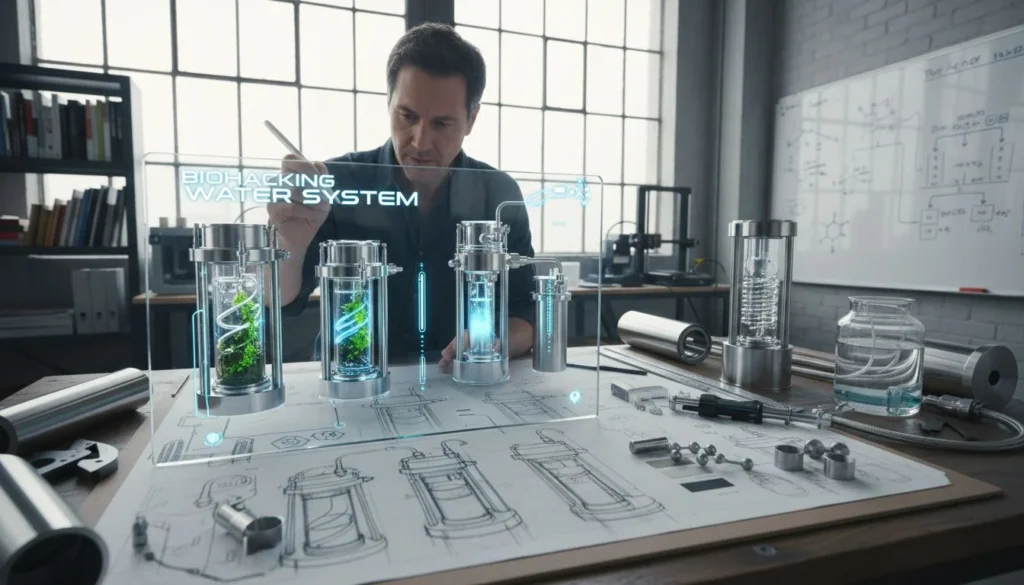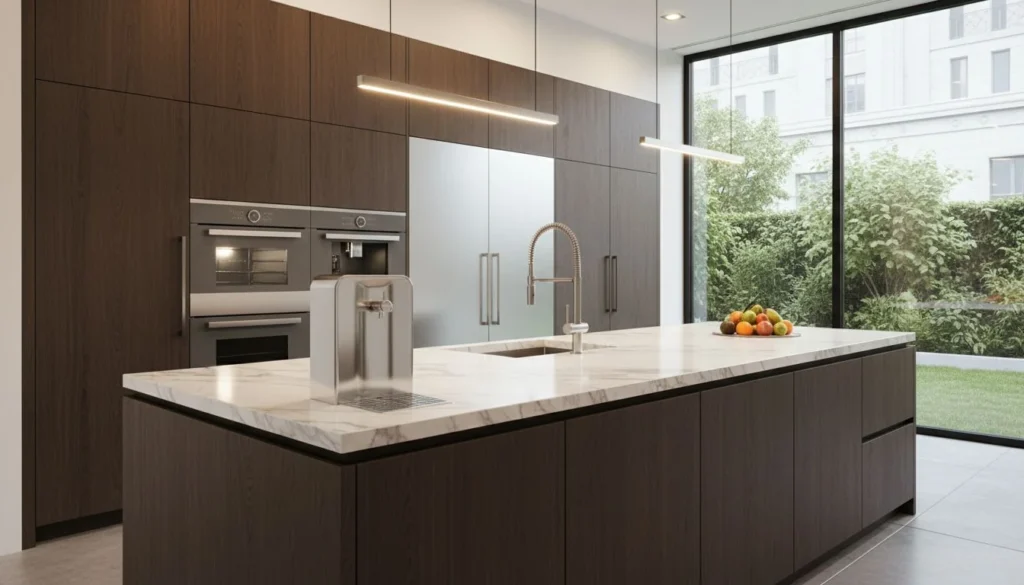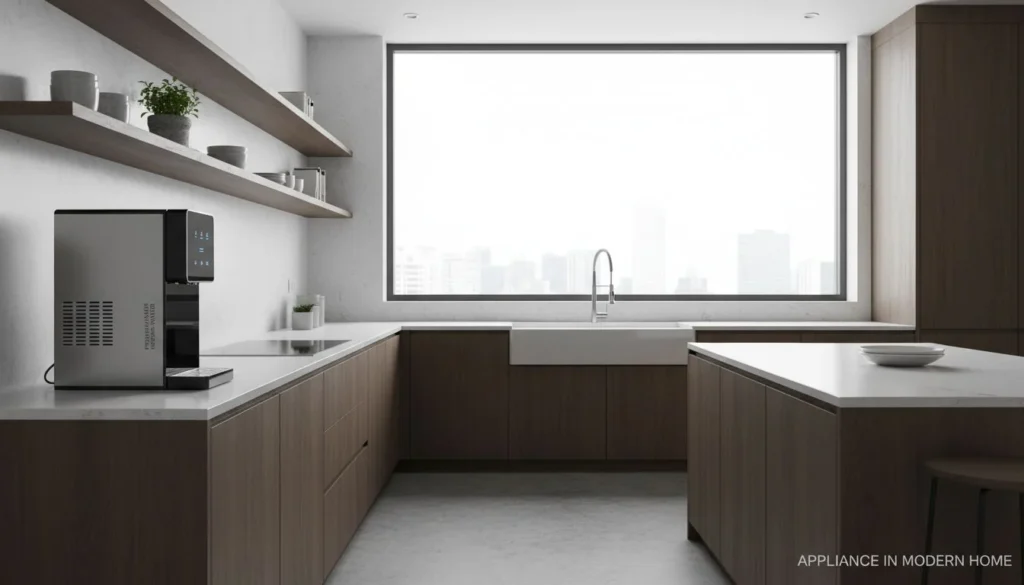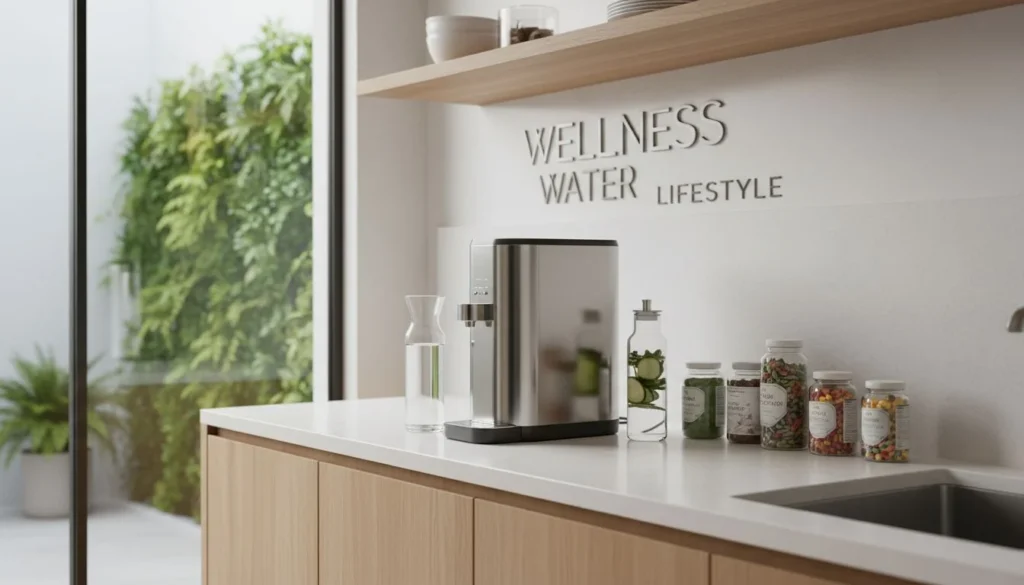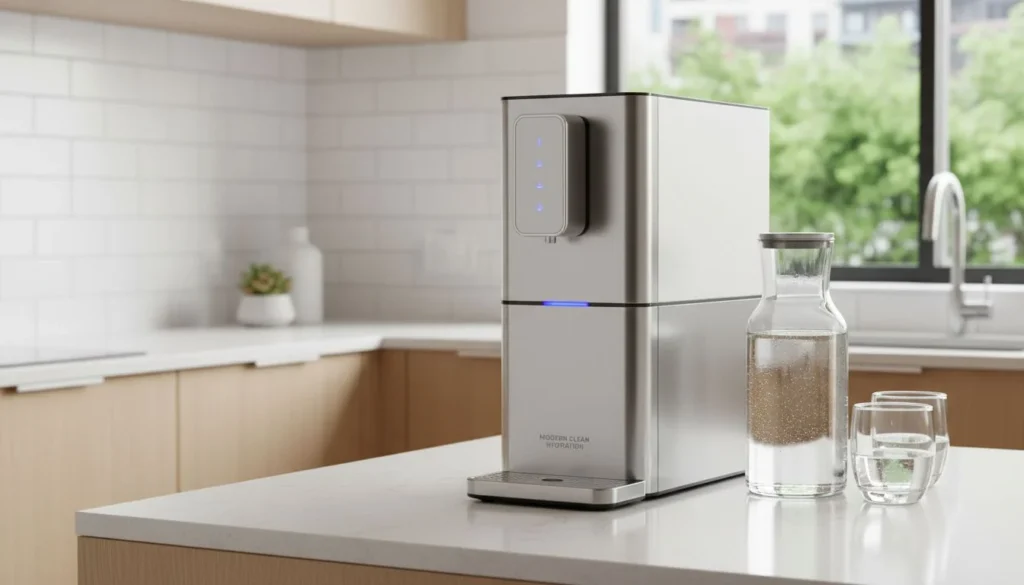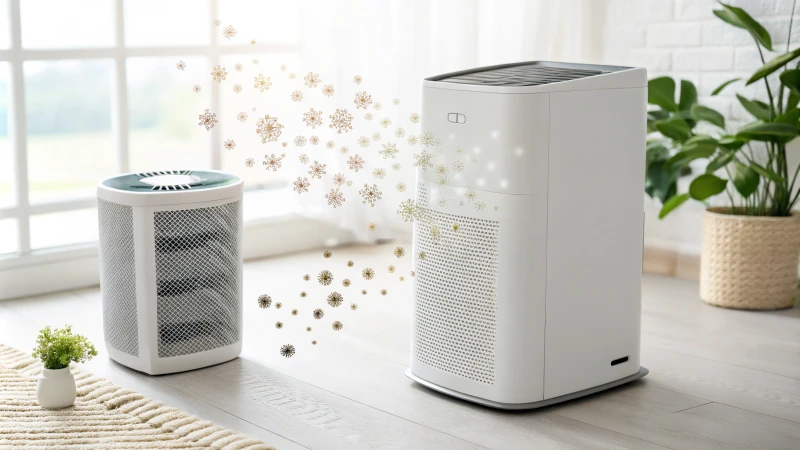
Decidir entre a ionização bipolar e uma HEPA purificador de ar pode ser como escolher entre uma rocha e um lugar difícil.
HEPA Os purificadores de ar funcionam muito bem. Capturam 99,97% de pequenas coisas no ar, como poeiras, partículas e vírus. Os sistemas de ionização bipolar concentram-se em determinados poluentes, como os COV. Por vezes, produzem ozono, que é prejudicial. Isto faz com que HEPA os purificadores são uma escolha mais segura. Além disso, são mais fiáveis.
HEPA Os purificadores têm vantagens. Compreender os pormenores de ambas as tecnologias ajuda a escolher a que melhor se adequa a si. Saiba como cada uma funciona, os seus pontos positivos e as suas possíveis desvantagens. Eu próprio explorei estas tecnologias. Fiquei espantado com a mudança HEPA trouxe para a minha casa. Os alergénios que me incomodaram durante anos desapareceram. A ionização bipolar também despertou o meu interesse. É utilizada em locais comerciais e tem algumas complexidades e riscos. Aprender sobre a purificação do ar mostrou-me que saber é realmente importante. O conhecimento é poder.
Os filtros HEPA captam 99,97% dos poluentes transportados pelo ar.Verdadeiro
Os filtros HEPA são concebidos para captar partículas tão pequenas como 0,3 mícrones.
A ionização bipolar não produz ozono.Falso
A ionização bipolar pode produzir ozono, o que pode representar riscos para a saúde.
Como é que a ionização bipolar funciona?
Já alguma vez pensou no facto de o seu purificador de ar fazer mais do que apenas mover o ar? Vamos explorar a fascinante ciência da ionização bipolar para ver como mantém o nosso ar limpo.
A ionização bipolar purifica o ar através da emissão de iões positivos e negativos. Estes iões aderem às partículas transportadas pelo ar, tais como poeiras e bactérias. As partículas tornam-se pesadas e caem no chão. Esta ação reduz os contaminantes. A qualidade do ar interior melhora significativamente.
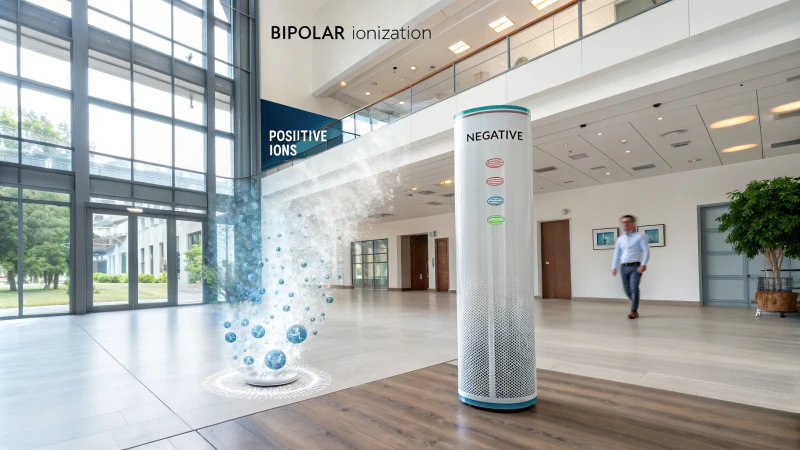
Compreender a ionização bipolar
Lembro-me da primeira vez que tomei conhecimento da ionização bipolar. Estava a explorar formas de manter o meu espaço de vida mais saudável. Esta tecnologia pareceu-me promissora quando procurei soluções de qualidade do ar melhores do que os purificadores de ar normais. A ionização bipolar liberta iões positivos e negativos no ar. Estes iões aderem a elementos como o pó, o pólen e os germes, fazendo com que se juntem. Uma vez formados os aglomerados, caem porque são demasiado pesados para permanecerem no ar. O ar fica mais limpo.
A ciência por detrás da ionização
A ionização bipolar faz-me lembrar os ímanes. Os ímanes puxam-se uns aos outros, tal como os iões positivos e negativos encontram partículas no ar. O processo é o seguinte:
| Componente | Função |
|---|---|
| Iões positivos | Ligam-se a partículas negativas, formando aglomerados |
| Iões negativos | Ligam-se a partículas positivas, neutralizando-as |
| Partículas transportadas pelo ar | Poeiras, bactérias, vírus, COVs |
Estes iões podem quebrar as proteínas dos vírus e das bactérias, possivelmente impedindo os germes nocivos. No entanto, riscos associados1 com esta tecnologia incluem a possível produção de ozono - um irritante respiratório.
Aplicações na purificação do ar
Reparei que muitos produtos comerciais utilizam a ionização bipolar com HEPA filtros. Esta mistura melhora a remoção de poluentes, especialmente compostos orgânicos voláteis (COV) e germes. Sistemas como ISO-Aire2 combinar ambos para um ar mais limpo.
Apesar dos seus benefícios, a ionização bipolar necessita de uma utilização cuidadosa. Os dispositivos devem cumprir normas como a UL 2998 para controlar os níveis de ozono de forma segura. A escolha de um purificador de ar requer que se considere se o os benefícios superam3 os potenciais inconvenientes.
Comparação com HEPA Filtragem
Ao explorar os purificadores de ar, descobri que a ionização bipolar é frequentemente combinada com HEPA filtros. A HEPA O filtro bipolar retém até 99,97% de partículas com 0,3 mícron ou mais. Mas a ionização bipolar concentra-se em partículas mais pequenas e em determinados produtos químicos.
Eis uma comparação:
| Caraterística | HEPA Filtragem | Ionização bipolar |
|---|---|---|
| Remoção de partículas | 99,97% eficiente para 0,3 microns | Destina-se a partículas mais pequenas |
| Neutralização de agentes patogénicos | Limitada | Pode desativar vírus |
| Produção de ozono | Nenhum | Risco possível |
HEPA são óptimos para reter partículas grandes; entretanto, a ionização bipolar trata de químicos específicos e de alguns germes que podem passar pelos filtros normais. A utilização de ambas as tecnologias proporciona uma solução completa para um ar mais limpo.
Saiba mais sobre a utilização segura e as certificações através da orientações mais recentes4 de especialistas em saúde.
A ionização bipolar cria ozono como subproduto.Verdadeiro
A ionização bipolar pode produzir ozono, um irritante respiratório, durante o funcionamento.
Os filtros HEPA são mais eficazes do que a ionização bipolar para os COV.Falso
A ionização bipolar visa melhor as partículas mais pequenas e os COV do que os filtros HEPA.
O que faz com que HEPA Os filtros são uma escolha inteligente?
Imagine-se a inalar um ar tão puro que parece que está no meio de uma floresta intocada.
HEPA com a sua impressionante eficiência de 99,97%, retêm partículas tão pequenas como 0,3 microns. Retêm o pó, o pólen, os esporos de bolor e também algumas bactérias e vírus. Estes filtros são muito importantes para melhorar o ar interior. Eles realmente ajudam.
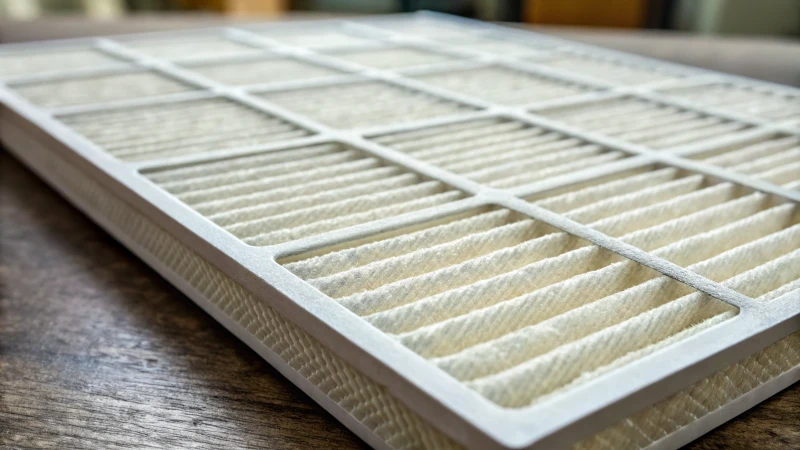
Compreensão HEPA Filtros
Aprender sobre HEPA (High-Efficiency Particulate Air) surpreenderam-me com o seu design simples mas poderoso. Estes filtros funcionam como uma rede apertada, capturando partículas sem utilizar métodos nocivos como iões ou ozono. A instalação de um HEPA O filtro em casa é como respirar ar fresco. Mesmo fresco! Estes filtros captam muitos poluentes diferentes.
| Tipo de partícula | Tamanho |
|---|---|
| Ácaros do pó | 0,1-0,4 µm |
| Pólen | 10-100 µm |
| Esporos de bolor | 3-100 µm |
| Bactérias | 0,3-60 µm |
Estes filtros são excelentes na retenção de vários poluentes, o que os torna uma óptima escolha para casas e escritórios5.
Vantagens em relação a outras tecnologias
HEPA não são tóxicos, o que me impressionou. Ao contrário de alguns purificadores de ar que podem libertar ozono - uma preocupação que partilhei com outras pessoas - HEPA os filtros não utilizam produtos químicos:
- Não tóxico: Ao contrário de alguns purificadores que podem emitir ozono, HEPA os filtros não contêm produtos químicos.
- Gama alargada: Capturam facilmente alergénios como o pólen e o pó, o que ajuda imenso as pessoas que sofrem de alergias.
O alívio do meu amigo foi óbvio quando encontraram esta solução eficaz. Outras tecnologias, como a ionização bipolar, podem criar problemas de ozono6. Assim, HEPA continuam a ser a minha primeira escolha para uma limpeza do ar segura e eficaz.
Aplicações práticas
HEPA são muito adaptáveis. Desde casas de família a hospitais movimentados, ajudam a manter uma elevada qualidade do ar:
| Aplicação | Benefícios |
|---|---|
| Hospitais | Reduz o risco de infecções transmitidas pelo ar |
| Instalações industriais | Controla a poeira e outras partículas |
| Casas | Melhora a qualidade do ar para quem sofre de alergias |
Lembro-me de uma visita a um hospital em que o pessoal elogiou HEPA sistemas para reduzir significativamente os riscos de infeção no ar.
Ao escolher os métodos de purificação do ar, é necessário conhecer os eficácia7 de HEPA em comparação com outros sistemas é crucial.
HEPA Filtros em sistemas combinados
Alguns purificadores de ar modernos combinam HEPA com outras, como o carvão ativado ou a ionização, para tratar os COV e os gases. Enquanto HEPA captura eficazmente as partículas sólidas, o carvão ativado trata bem os odores e os gases.
Em conclusão, embora muitas tecnologias prometam um ar mais limpo, HEPA provaram ser fiáveis e seguros. Para quem pretende um método fiável de purificação do ar, HEPA são uma excelente opção. Compreender os pormenores de cada sistema é essencial para maximizar benefícios para a qualidade do ar8.
Os filtros HEPA emitem ozono durante o funcionamento.Falso
Os filtros HEPA não emitem ozono; não contêm produtos químicos e são seguros.
Os filtros HEPA são eficazes nos hospitais para reduzir as infecções.Verdadeiro
Ajudam a manter a qualidade do ar, reduzindo os riscos de infecções transmitidas pelo ar.
Existem riscos associados à ionização bipolar?
Lembro-me da primeira vez que ouvi falar de ionização bipolar. Parecia um truque de magia para limpar o ar. Depois alguém disse a palavra "ozono". Isso fez-me pensar nos possíveis perigos. Os riscos potenciais estavam na minha mente. Isso preocupava-me muito.
A ionização bipolar resulta frequentemente na produção de ozono se não for manuseada com cuidado. Este processo divide as moléculas em iões. Por vezes, cria ozono. Os dispositivos com certificação UL 2998 reduzem normalmente este risco.
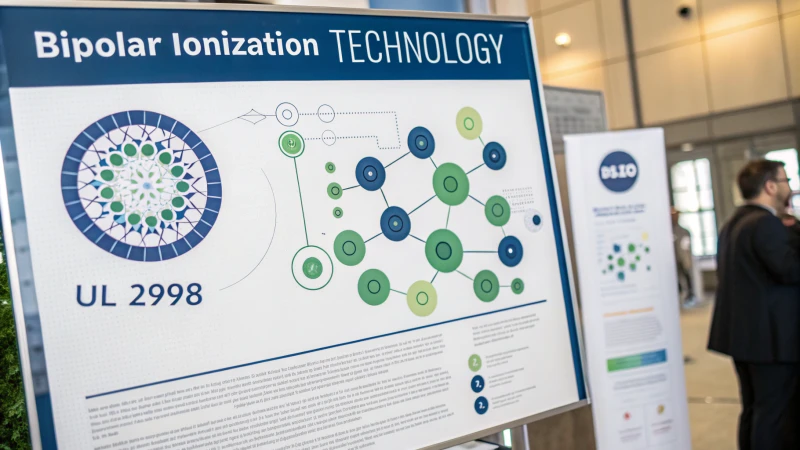
Compreender a ionização bipolar
Fiquei curioso sobre a ionização bipolar, por isso explorei mais. Divide as moléculas de ar em iões carregados. Estes iões aderem a partículas como pó, bolor e até vírus. Isto ajuda os filtros a apanhá-las facilmente. No entanto, há um problema: este processo pode criar acidentalmente ozono. Para alguém como eu, que se preocupa com saúde9Isto é preocupante.
| Prós | Contras |
|---|---|
| Eficaz contra COVs | Potencial produção de ozono |
| Reduz os alergénios | Requer certificação UL 2998 |
| Melhora a filtragem | Possíveis riscos de mau funcionamento do dispositivo |
A preocupação com o ozono
O ozono preocupa-me porque irrita os pulmões. Pode piorar a asma e outros problemas pulmonares, o que ninguém quer. Alguns aparelhos que utilizam ionização bipolar podem aumentar os níveis de ozono no interior. Verificar se um aparelho cumpre as normas UL 2998 é crucial para manter os níveis de ozono baixos. Muitas marcas de confiança utilizam HEPA filtros10 com ionização bipolar para resolver estes problemas.
O papel da certificação
A certificação UL 2998 é algo que verifico cuidadosamente porque mostra que um dispositivo limita a libertação de ozono. Sem ela, os aparelhos podem não ser seguros devido aos elevados níveis de ozono. Sempre que penso em utilizar esta tecnologia, verifico sempre esta certificação. Para quem se preocupa com a segurança, a combinação da ionização bipolar com HEPA Os filtros parecem inteligentes.
Comparação das tecnologias de purificação do ar
Ao escolher os métodos de purificação do ar, tenho em conta a sua eficácia e a sua segurança. HEPA captam até 99,97% dos poluentes e são normalmente seguros e fiáveis. Por outro lado, a ionização bipolar visa contaminantes específicos, como os COV e os vírus, mas pode criar ozono. Compreender os prós e os contras ajuda-me a tomar uma decisão sensata.
- Comparação de purificadores de ar11: Veja como as diferentes tecnologias se comparam.
- Riscos do ozono para a saúde12: Saiba mais sobre os riscos da exposição ao ozono.
Conhecer as soluções de purificação do ar de diferentes pontos de vista pode dar conselhos úteis para escolher a melhor tecnologia para as suas necessidades.
A ionização bipolar não gera ozono.Falso
A ionização bipolar pode produzir ozono se não for devidamente controlada.
A certificação UL 2998 garante baixos níveis de ozono.Verdadeiro
A norma UL 2998 limita as emissões de ozono a níveis seguros, garantindo a segurança.
Que purificador de ar deve escolher para a sua casa?
Selecionar um purificador de ar é como encontrar o herói perfeito para a sua casa. Cada um promete combater a sujidade e os odores com capacidades especiais.
A HEPA O purificador de ar da marca Purificator adapta-se bem à maioria das casas. Tem uma forte capacidade de captar poeiras, alergénios e compostos orgânicos voláteis (COV). Preste atenção ao tamanho da sua divisão quando escolher um modelo. Considere também quaisquer necessidades especiais de qualidade do ar.
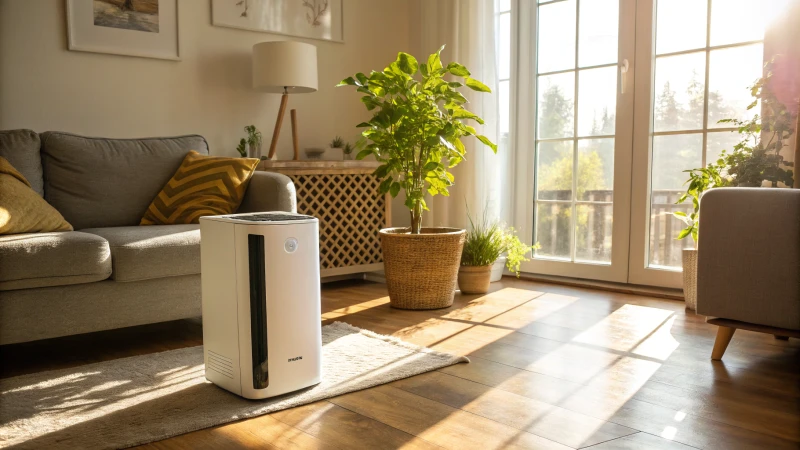
Guia simples para as tecnologias de purificação do ar
Um dia, apercebi-me da importância do ar puro. A minha filha foi diagnosticada com asma depois da escola. Precisávamos de uma casa mais saudável. Por isso, explorei os purificadores de ar.
As lojas oferecem muitos dispositivos com várias tecnologias. HEPA filtros chamaram-me a atenção primeiro. Estes filtros prometem remover 99,97% das coisas más no ar, como o pó, o pólen e alguns germes. Imagine-se sentado em sua casa, a respirar ar puro, sem preocupações.
Mas também há Ionização bipolar13. Funciona como uma pequena experiência científica em sua casa. Divide as moléculas para limpar o ar. É ótimo contra vírus e cheiros. Mas, por vezes, pode criar ozono, o que não é muito bom.
Comparação HEPA e ionização bipolar
Encontrei HEPA filtros mais fiáveis. Não criam ozono. Para famílias com alergias ou asma14, HEPA é fantástica, pois apanha o pólen e os pêlos dos animais. A ionização bipolar também é utilizada em grandes edifícios e combina bem com HEPA para obter benefícios adicionais de filtragem. Os controlos de segurança são importantes.
| Caraterística | HEPA Purificador de ar | Ionização bipolar |
|---|---|---|
| Eficiência de filtragem | 99.97% | Varia |
| Produção de ozono | Nenhum | Possível |
| Poluentes alvo | Pó, alergénios | Odores, COVs |
| Aplicações comuns | Residencial | Comercial |
Escolher com base no tamanho da divisão e nas necessidades
A escolha do purificador de ar correto depende do tamanho da divisão. As divisões grandes necessitam de purificadores com uma elevada taxa de fornecimento de ar limpo (CADR). Os purificadores silenciosos e eficientes funcionam melhor em quartos e salas de estar. Se os cheiros são o seu problema, consulte modelos de filtros de carvão15.
Dicas de marca e certificação
Escolha marcas de confiança com um bom suporte. Procure certificações como a UL 2998 para segurança contra o ozono. A Dyson e a Coway oferecem frequentemente HEPA purificadores. As avaliações e certificações são vitais antes de comprar para escolher a melhor opção para o bem-estar da sua família.
Os filtros HEPA removem 99,97% das partículas transportadas pelo ar.Verdadeiro
Os filtros HEPA são concebidos para capturar 99,97% de partículas tão pequenas como 0,3 microns.
A ionização bipolar produz sempre ozono.Falso
A ionização bipolar pode produzir ozono, mas nem sempre; depende do dispositivo e da tecnologia utilizada.
Conclusão
Este artigo compara a ionização bipolar e HEPA purificadores de ar, destacando HEPAA eficiência superior do sistema de proteção contra o ozono na captura de poluentes e as preocupações de segurança relativas à produção de ozono em sistemas bipolares.
-
Esta ligação explora os potenciais riscos, especialmente a produção de ozono, ajudando os leitores a tomar decisões informadas sobre a utilização segura da ionização bipolar. ↩
-
Descubra como a ISO-Aire integra a ionização bipolar com outras tecnologias para uma purificação do ar melhorada. ↩
-
Saiba mais sobre os benefícios da utilização da ionização bipolar em vários contextos para melhorar a qualidade do ar. ↩
-
Descubra as diretrizes de segurança e as certificações necessárias para a utilização segura de dispositivos de ionização bipolares. ↩
-
Explorar a aplicação generalizada de filtros HEPA em ambientes residenciais e comerciais para melhorar a qualidade do ar. ↩
-
Saiba mais sobre os potenciais riscos para a saúde associados à produção de ozono de determinadas tecnologias de purificadores de ar. ↩
-
Descubra estudos pormenorizados que demonstram a eficiência dos filtros HEPA na captura de vários poluentes. ↩
-
Compreender as inúmeras vantagens para a saúde e o bem-estar de manter o ar interior limpo. ↩
-
Compreender os riscos para a saúde associados à exposição ao ozono para tomar decisões informadas sobre as tecnologias de purificação do ar. ↩
-
Obtenha informações sobre como os filtros HEPA capturam eficazmente os poluentes, garantindo um ar mais limpo no interior. ↩
-
Comparar várias tecnologias de purificação do ar para compreender a sua eficácia e segurança. ↩
-
Explorar os potenciais impactos na saúde da exposição ao ozono em recintos fechados para avaliar as preocupações de segurança. ↩
-
Saiba como funciona a ionização bipolar e as suas vantagens para neutralizar os contaminantes do ar. ↩
-
Descubra porque é que os purificadores de ar HEPA são recomendados para quem sofre de alergias. ↩
-
Explore as opções para remover eficazmente os odores e os COV do ar da sua casa. ↩


